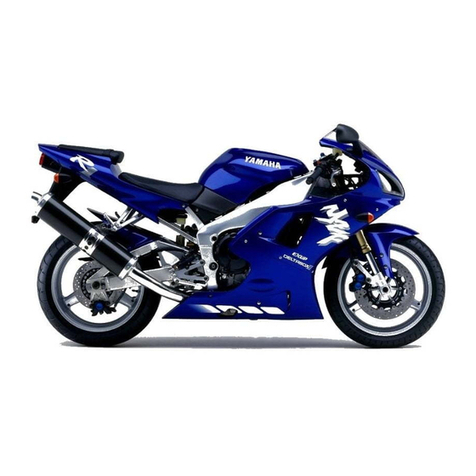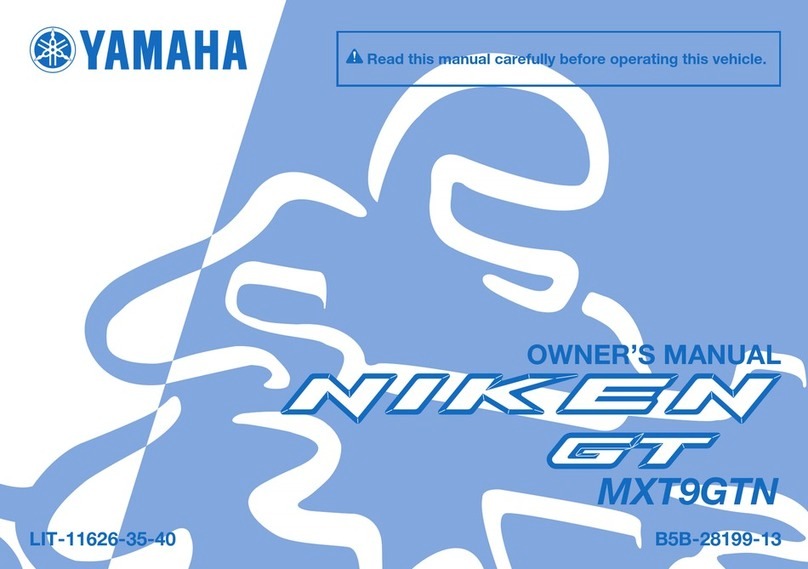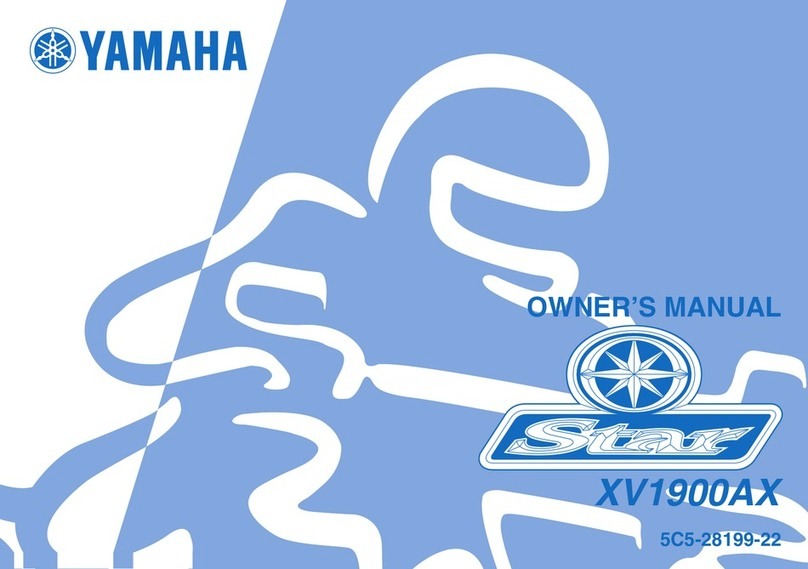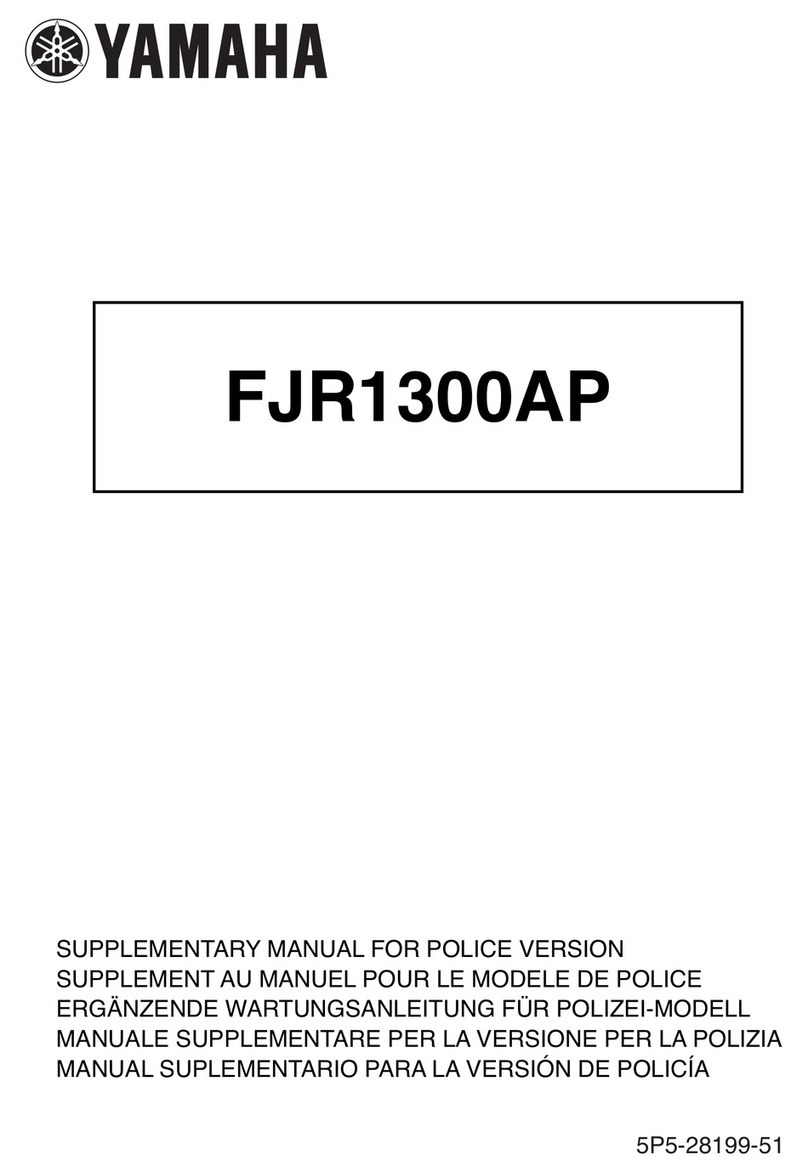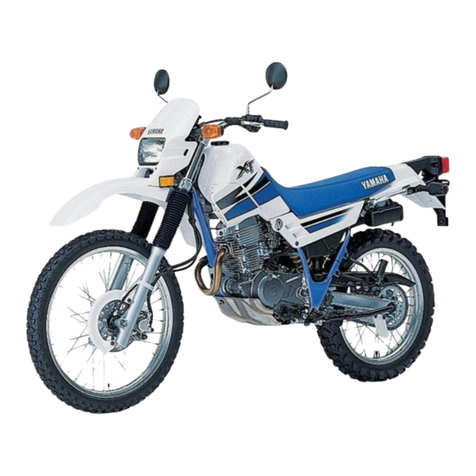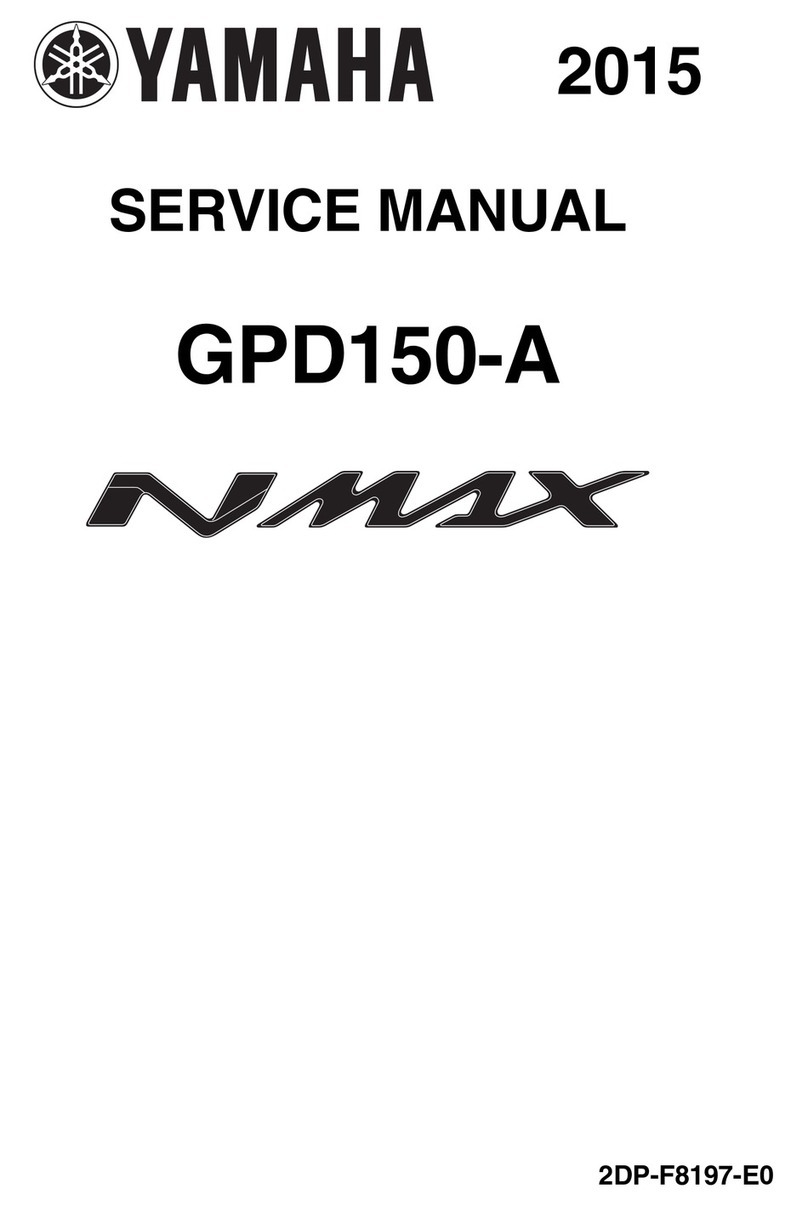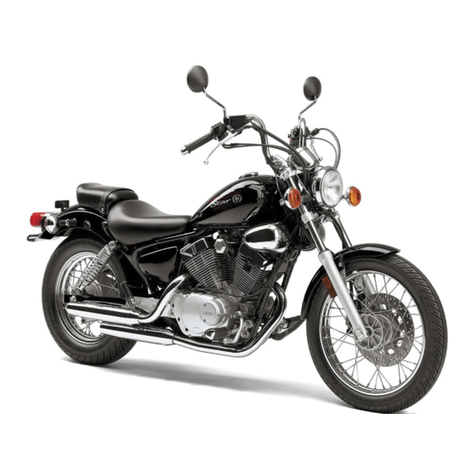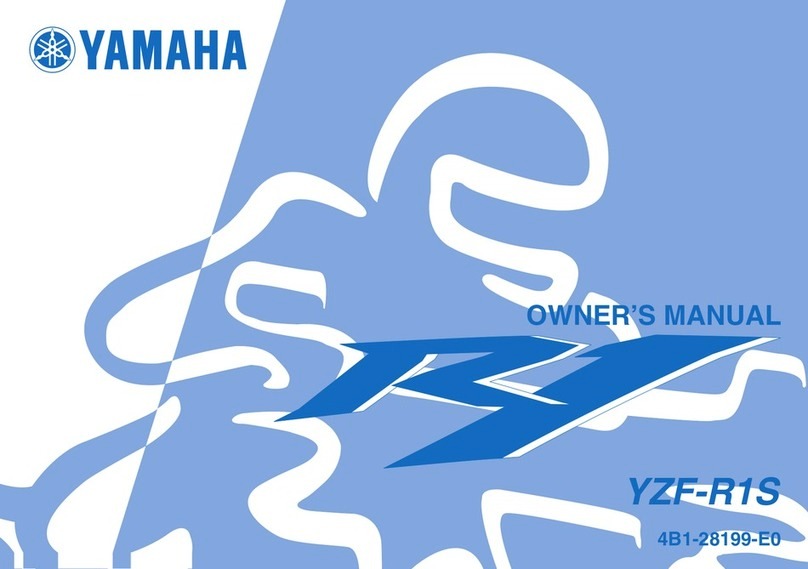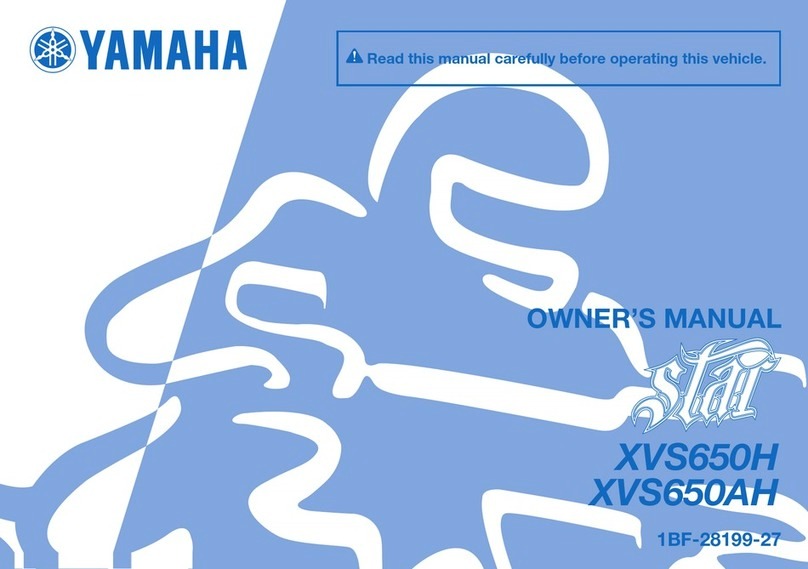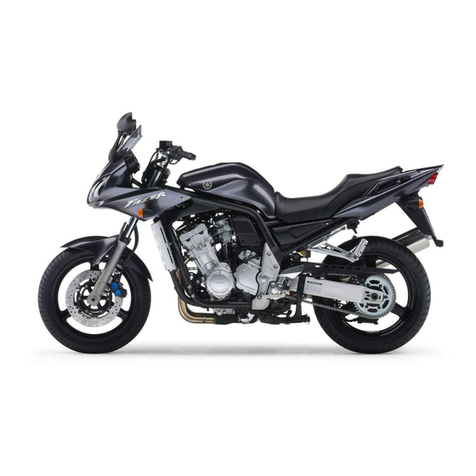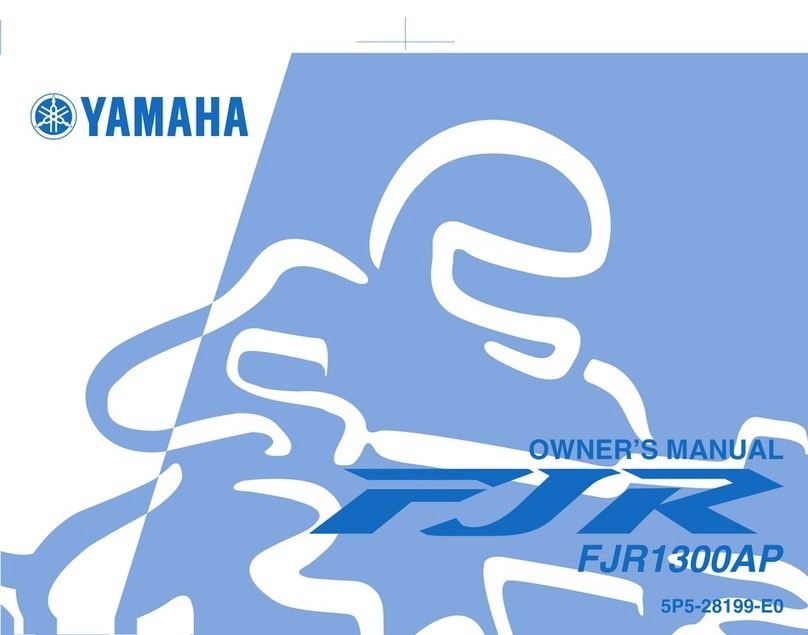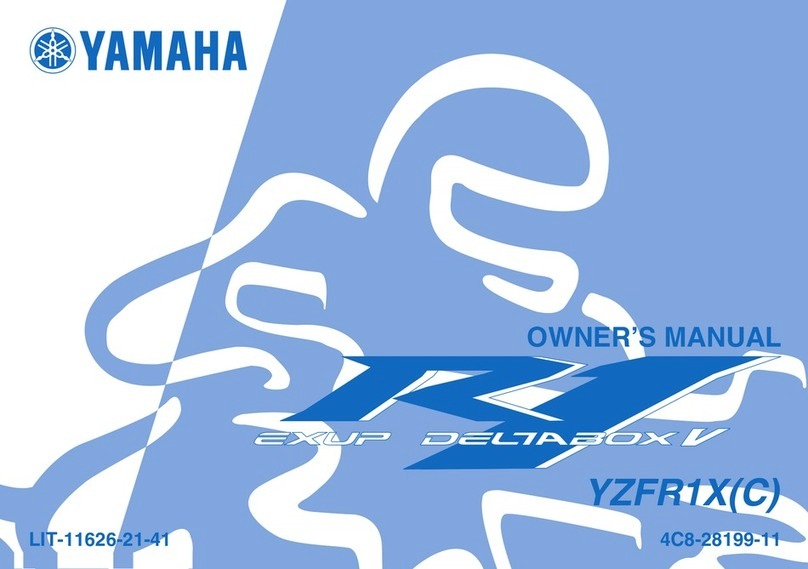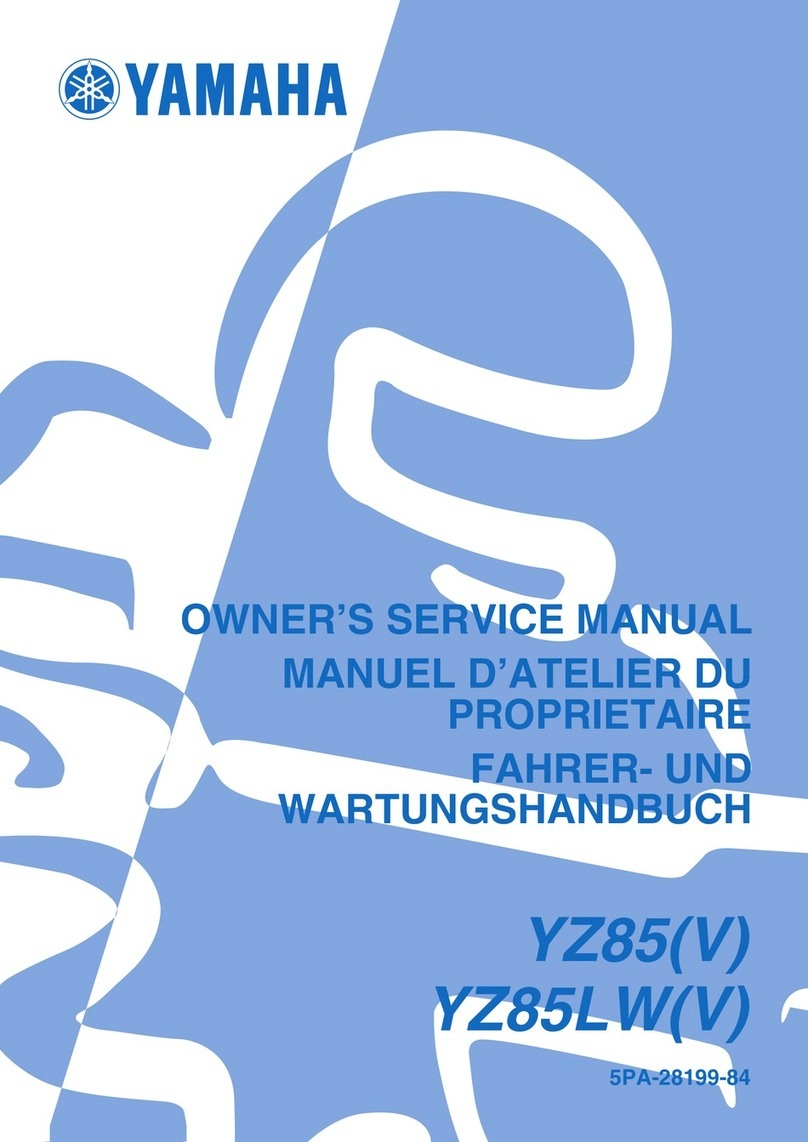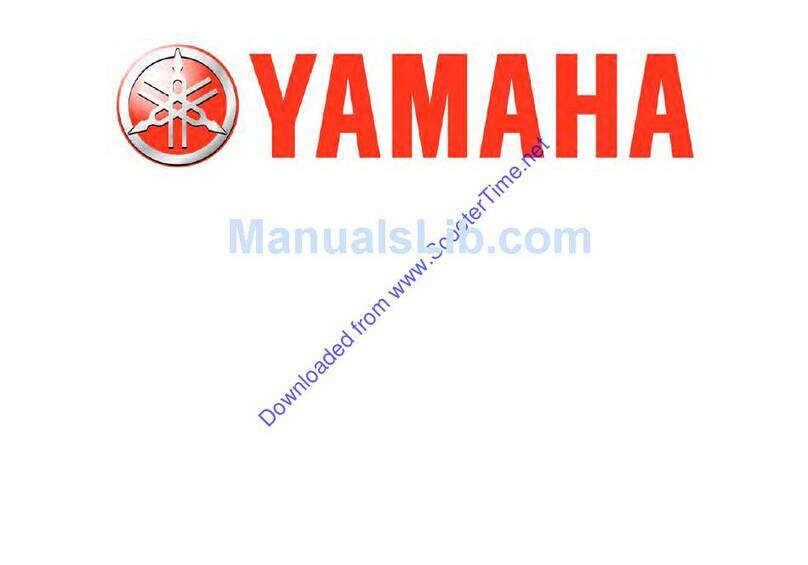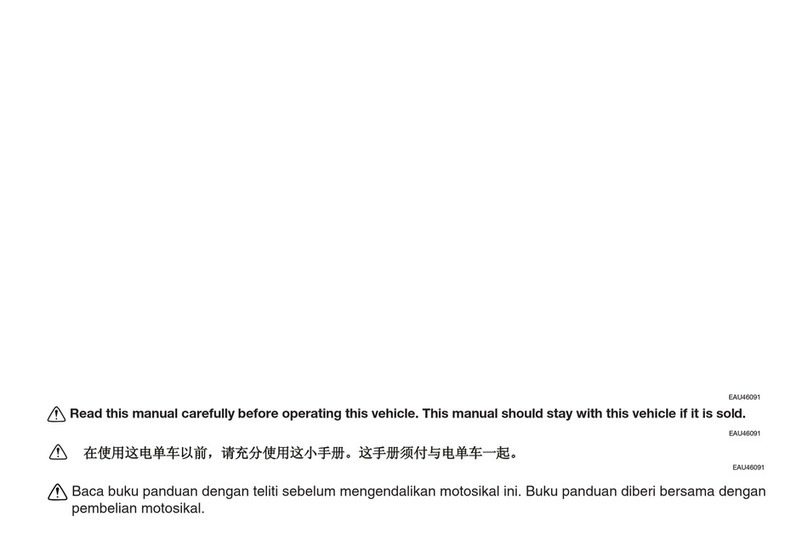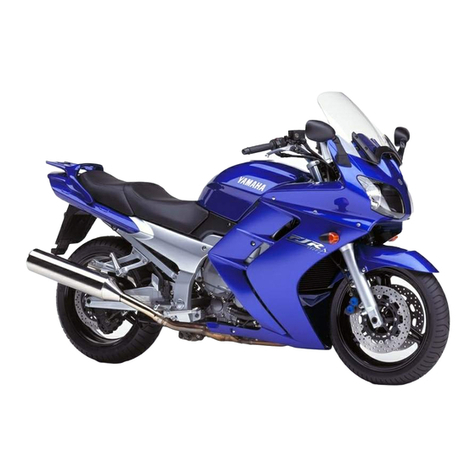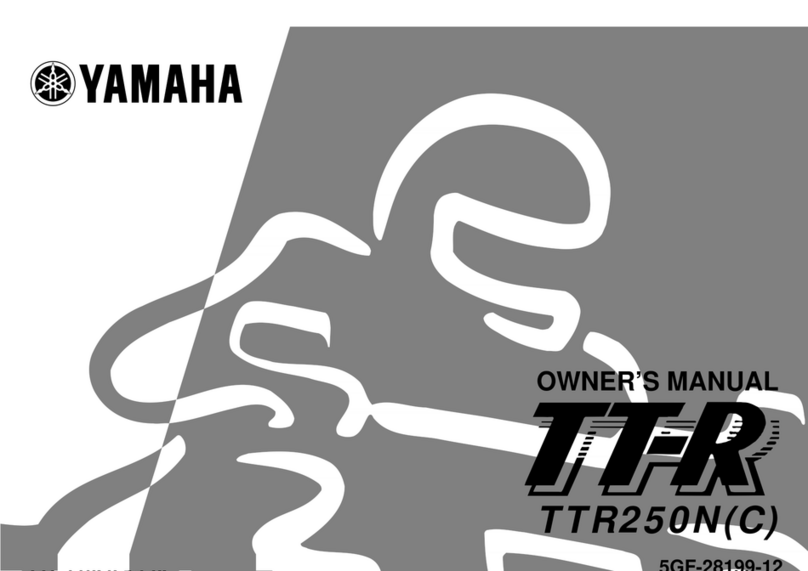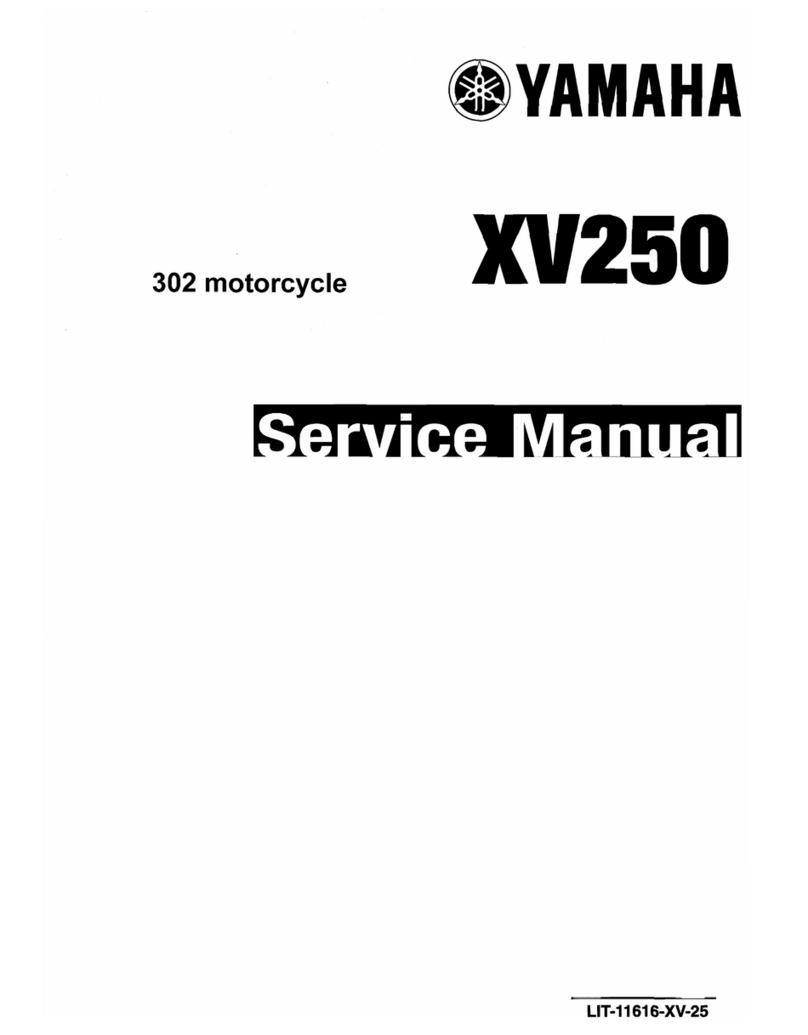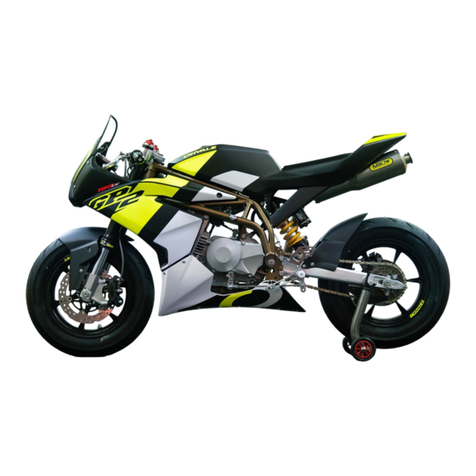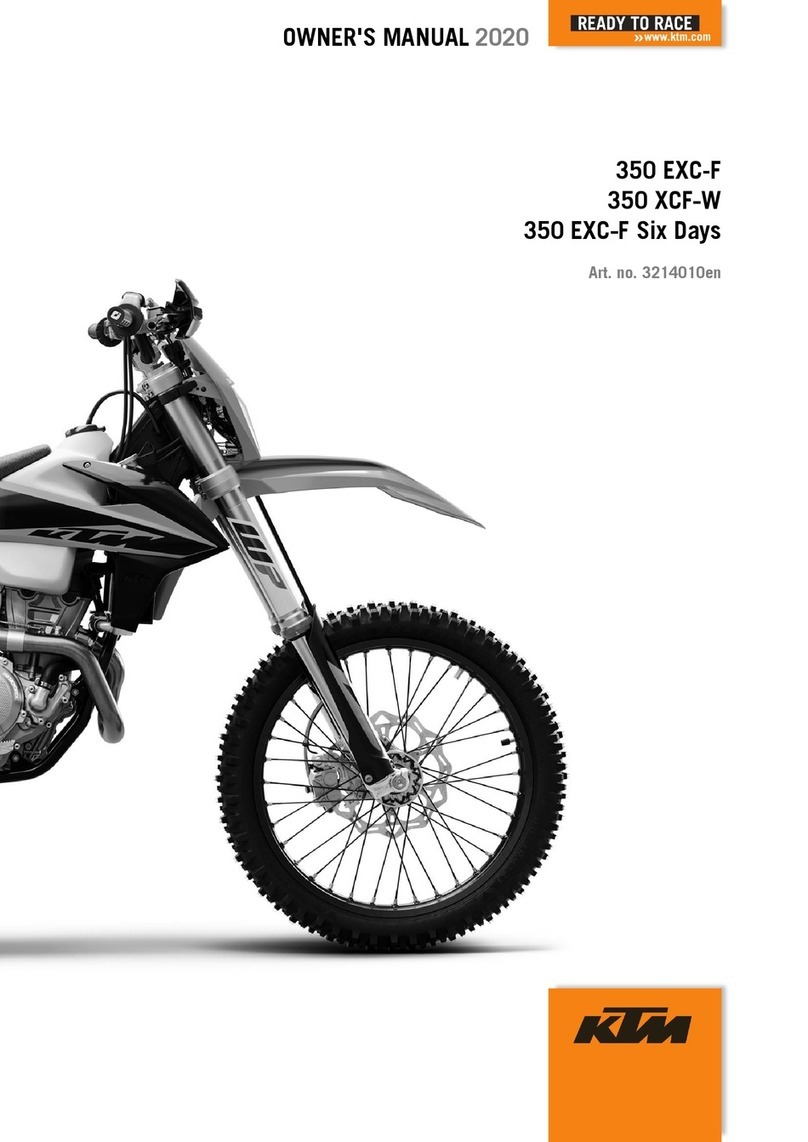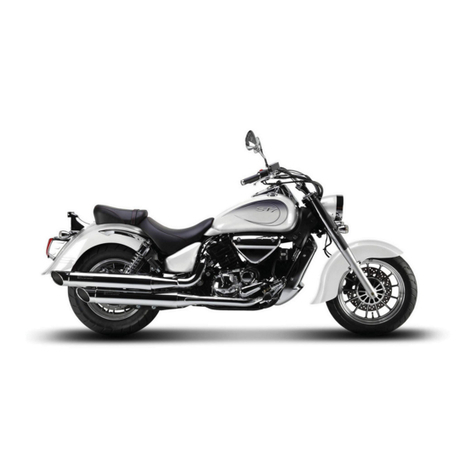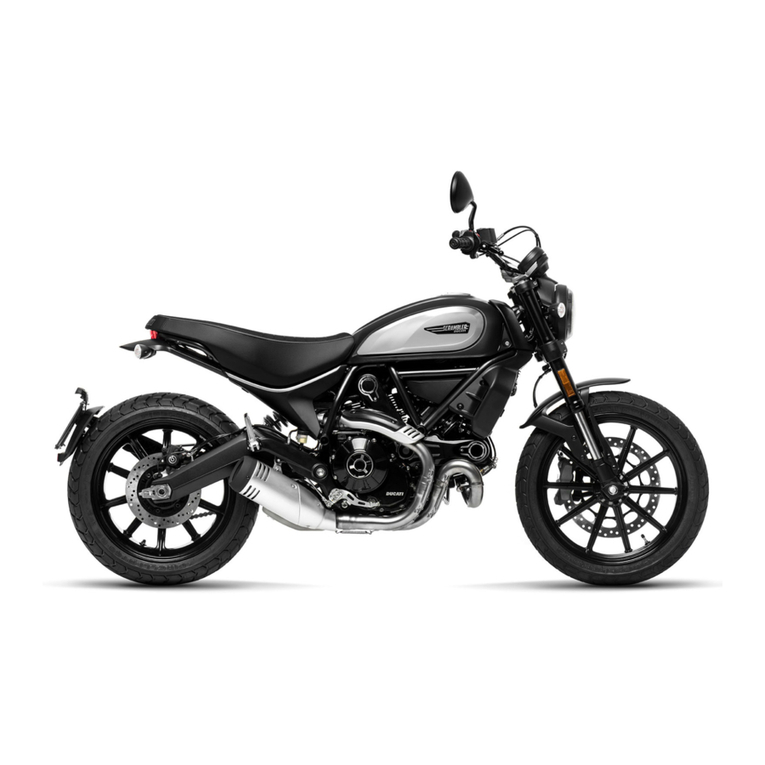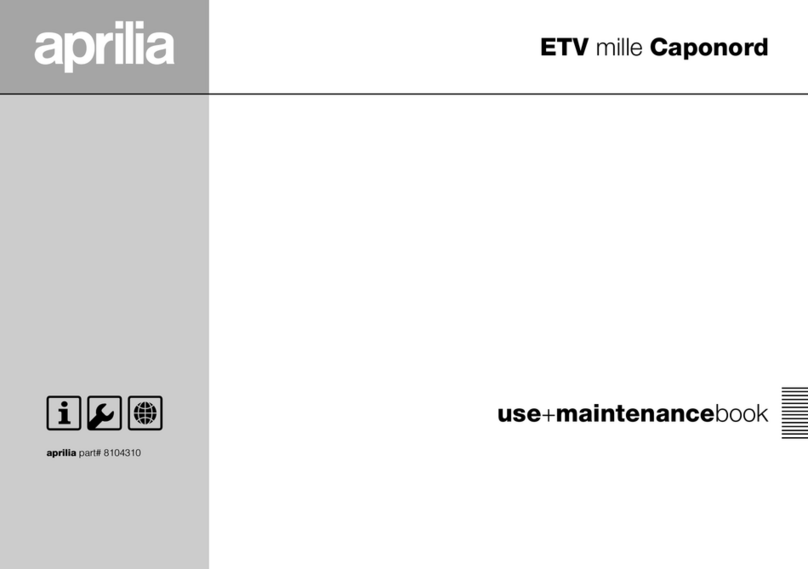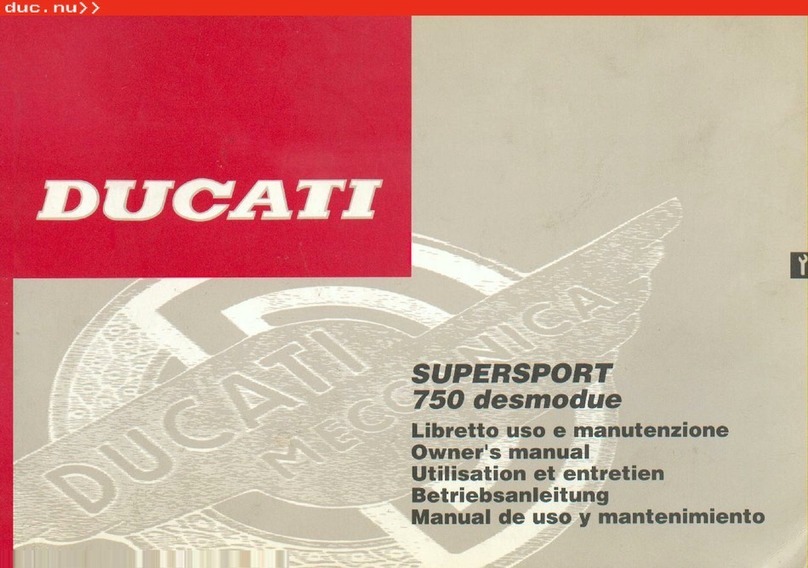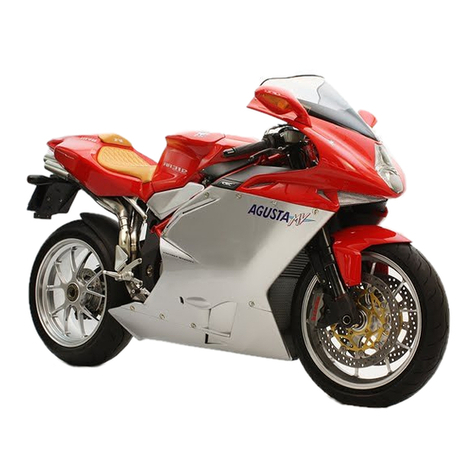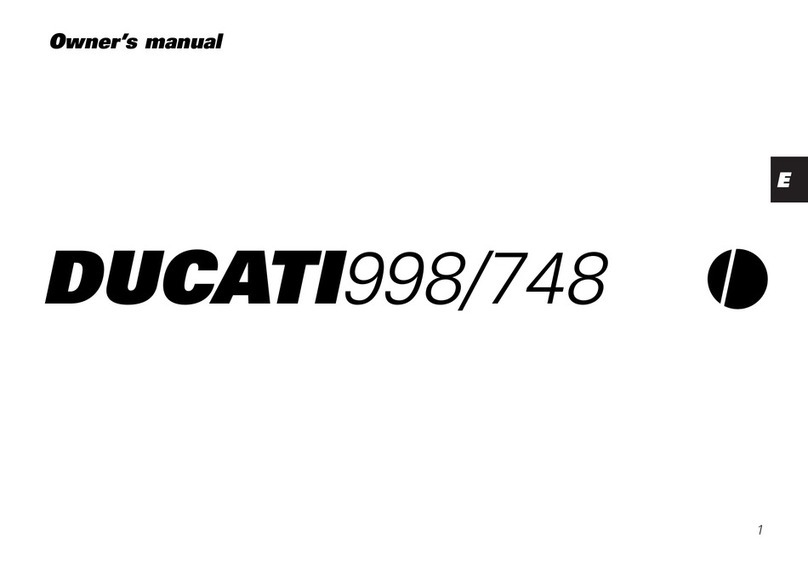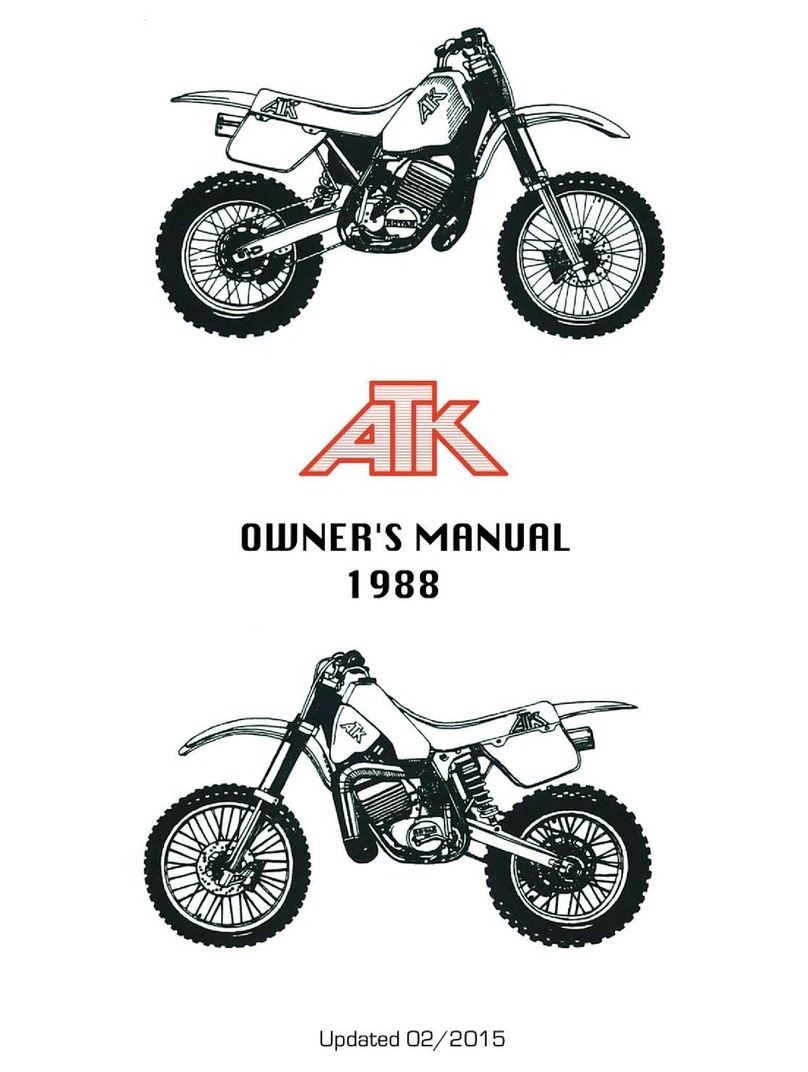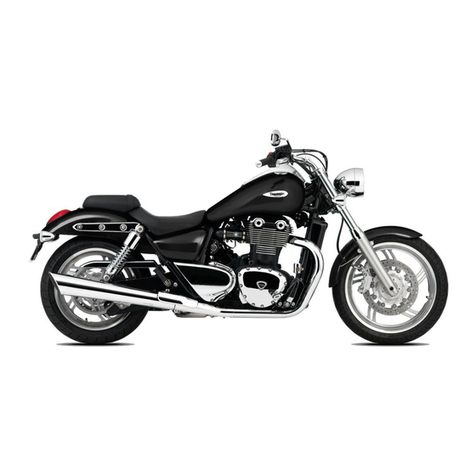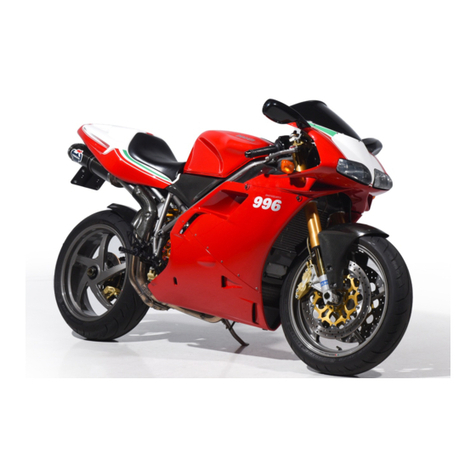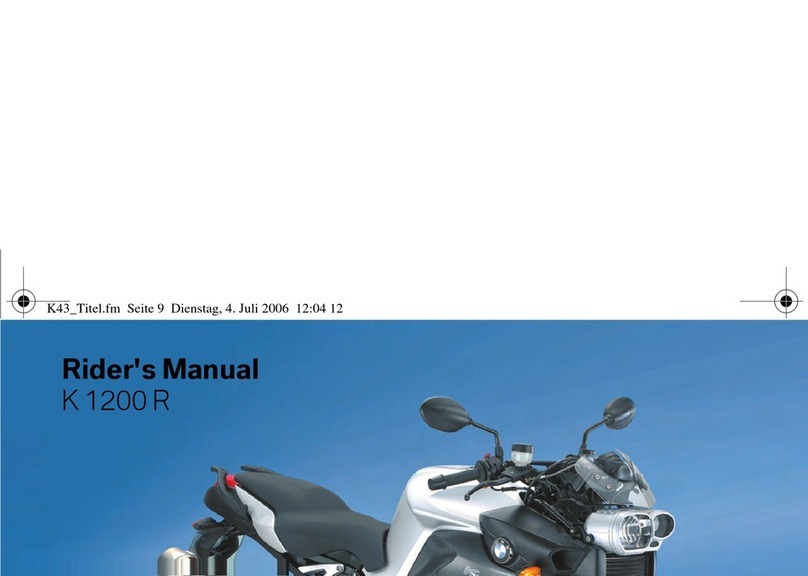
Table of contents
Location of important labels ........... 1-1
Safety information............................ 2-1
Further safe-riding points ............... 2-5
Helmets .......................................... 2-6
Description ....................................... 3-1
Left view ......................................... 3-1
Right view....................................... 3-2
Controls and instruments ............... 3-3
Instrument andcontrol
functions ........................................... 4-1
Main switch/steering lock .............. 4-1
Indicator lights and warning light ... 4-2
Speedometer unit........................... 4-3
Fuel gauge...................................... 4-3
Handlebar switches........................ 4-3
Shift pedal ...................................... 4-5
Brake lever...................................... 4-5
Brake pedal .................................... 4-5
Fuel tank cap.................................. 4-6
Fuel................................................. 4-6
Catalytic converter ......................... 4-7
Seat ................................................ 4-8
Helmet holders ............................... 4-8
Storage compartment .................... 4-9
Sidestand ....................................... 4-9
For your safety – pre-operation
checks ...............................................5-1
Operation andimportant riding
points .................................................6-1
Engine break-in...............................6-1
Starting and warming up a cold
engine ..........................................6-2
Shifting ............................................ 6-3
Tips for reducing fuel
consumption................................6-4
Parking ............................................6-4
Periodic maintenance and
adjustment ........................................7-1
Tool kit ............................................7-1
Periodic maintenance chart for
the emission control system........7-2
General maintenance and
lubrication chart...........................7-4
Removing and installing
the panel......................................7-8
Checking the spark plug .................7-8
Engine oil and oil filter element .......7-9
Why Yamalube ..............................7-12
Replacing the air filter element
and cleaning the check hoses ...7-12
Adjusting the engine
idling speed ...............................7-13
Adjusting the throttle grip
free play ..................................... 7-14
Valve clearance............................. 7-14
Tires .............................................. 7-15
Wheels .......................................... 7-16
Checking the brake lever
free play..................................... 7-17
Adjusting the brake pedal
free play..................................... 7-17
Brake light switches ..................... 7-18
Checking the front brake pads
and rear brake shoes ............... 7-19
Checking the brake fluid level ...... 7-19
Changing the brake fluid ............. 7-20
Drive chain slack........................... 7-20
Cleaning and lubricating the
drive chain ................................. 7-22
Checking and lubricating
the cables.................................. 7-22
Checking and lubricating the
throttle grip and cable end........ 7-23
Checking and lubricating the
brake lever................................. 7-23
Checking and lubricating
the brake pedal ......................... 7-23
Checking and lubricating the
centerstand and sidestand........ 7-24
Lubricating the swingarm
pivots......................................... 7-24
Checking the front fork................. 7-25
Checking the steering................... 7-25
Checking the wheel bearings ....... 7-26
Battery .......................................... 7-26
UBKWE0E0.book Page 1 Tuesday, July 18, 2023 8:34 AM

